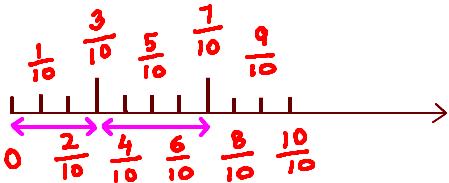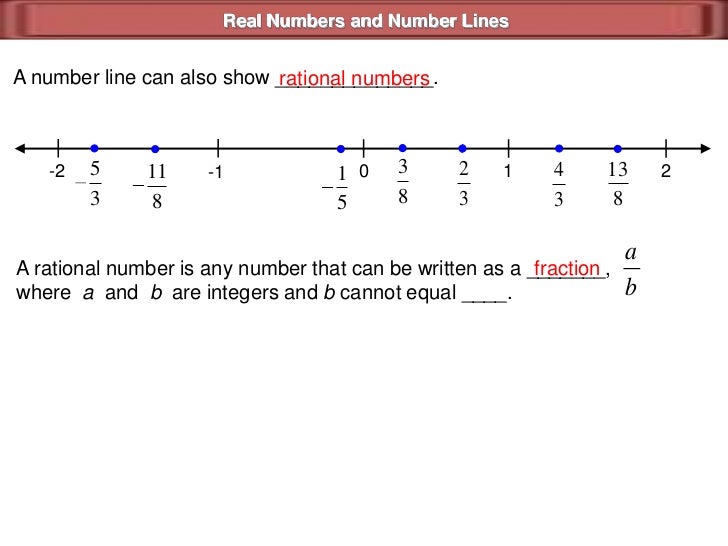Plot 9/10 And 1 2/5 On The Number Line
Plot the following points on the number line without measuring. Use the number line in Part (a) to compare the fractions by writing , lines: 2. Plot the following points on the number line without measuring. Free line equation calculator - find the equation of a line given two points, a slope, or intercept step-by-step This website uses cookies to ensure you get the best experience. By using this website, you agree to our Cookie Policy.
Number Line Calculator: Enter 2 points on the number line you want to evaluate.
Number Line helps students visualize number sequences and illustrate strategies for counting, comparing, adding, subtracting, multiplying, and dividing. Choose number lines labelled with whole numbers, fractions, decimals, or negative numbers. Or use a blank number line, with or without tick marks.
Describe intervals between points on the line using forward or backward jumps above and below the line. Jumps can also be labelled with their values or left blank. Add custom tick marks to the number line to show equivalence or compare number values. Show strategies with drawing and annotation tools.
Hide elements of the sequence shown on the number line, which challenges students to use what they know about number relationships and computation to identify those missing elements.
This virtual number line is an open-ended educational tool, ideal for elementary classrooms and other learning environments that use laptops, iPads, Chromebooks, or Windows devices.
The number line is a key model used in Bridges in Mathematics, second edition. Online preview available.
App Features
- Mark the number line with multiples of whole numbers, fractions, or decimals. Set the starting value of the line, including using negative values.
- Add and manipulate forward and backward jumps, above or below the line.
- Label jump bars, manually or automatically, to show intervals or hide labels altogether.
- Add custom tick marks and values to the blank number lines.
- Hide and reveal jumps, numbers, and other elements with resizable covers to create your own problems and model strategies.
- Use the drawing tools to annotate work and show understanding.
- Add equations, expressions, and descriptions with the math text and writing tools.
- Share your work by saving an image or url, or providing a sharing code to others. Great for creating the initial setup of an activity, then sharing it with students so they can explore it further.

Related Products
Get more from this app
Book for Educators
This book provides teachers with the theoretical basis, practical knowledge, and expertise to effectively use the number line as a powerful model for mathematical learning in K-5 education. The number line is a common artifact in elementary school classrooms, but is seldom used to its potential. This book helps te achers to implement lesson activities through which children can develop confidence, fluency, and facility with numbers. It also will enable children to develop powerful intuitive strategies for both single and multiple digit addition and subtraction.
Number Line Strategies & Models
Acknowledgements
Number Line was made possible by a generous donation from Dr. David Moursund.
Technical Support and Feedback
These apps were crafted by Clarity Innovations: “We improve teaching and learning by creating solutions that match promising technologies with the needs of education.” For app support and feedback, contact them at www.clarity-innovations.com/apps.
© 2021 The Math Learning Center
Ordering FractionsAnswer
Yes. The seven fractions in the problem statement are properly arranged from least to greatest.
There are three good ways to help you arrange any fractions from least to greatest:
1. Rewrite all fractions so that they each have the same denominator
2. Change all fractions into their decimal equivalent.
3. Plot the fractions on a number line
-----------------------------
1. Rewrite all of the fractions so that they each have the same denominator

(just as you would if you were adding or subtracting the fractions)
1/6, 1/4, 1/3, 1/2, 2/3, 3/4, 5/6
Plot 9/10 And 1 2/5 On The Number Line Multiplication
(1/6) × (2/2) = 2/12
(1/4) × (3/3) = 3/12
(1/3) × (4/4) = 4/12
(1/2) × (6/6) = 6/12

(2/3) × (4/4) = 8/12
(3/4) × (3/3) = 9/12
 (5/6) × (2/2) = 10/12
(5/6) × (2/2) = 10/12 when the fractions all have the same denominator, they can easily be arranged from least to greatest
2/12, 3/12, 4/12, 6/12, 8/12, 9/12, 10/12
Therefore:
1/6, 1/4, 1/3, 1/2, 2/3, 3/4, 5/6
2. Change all fractions into their decimal equivalent.
(1/6) = 0.1666666667
(1/4) = 0.25
(1/3) = 0.3333333333
(1/2) = 0.5
(2/3) = 0.6666666667
(3/4) = 0.75
(5/6) = 0.8333333333
the decimal values can easily be arranged from least to greatest
0.1666666667, 0.25, 0.3333333333, 0.5, 0.6666666667, 0.75, 0.8333333333
Therefore:
1/6, 1/4, 1/3, 1/2, 2/3, 3/4, 5/6
Plot 9/10 And 1 2/5 On The Number Line Calculator
3. Plot the fractions on a number line
Plot 9/10 And 1 2/5 On The Number Line Worksheet
Thanks for writing.
Staff
www.solving-math-problems.com
Plot 9/10 And 1 2/5 On The Number Line Minus
